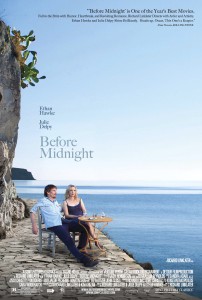A professor I admire once said — while discussing the films of Yasujiro Ozu, or maybe it was semiotics (can’t remember) — that watching the sun set can be both a thing of incredible beauty and deep sadness, often simultaneously. I thought of this as I watched Richard Linklater’s Before Midnight, which includes a scene of a couple sitting by the sea in Greece, watching the sun slowly dip below the horizon. It’s there, there, there — and then it’s not there. A fleeting flare of arresting orange. Present and then absent. Perhaps the beauty and sadness of a sunset has to do with the fact that it’s the process in nature we humans most identify with. Ours is a context of ephemerality.
Login to read more
Sign in or create a free account to access Subscriber-only content.
Topics:
